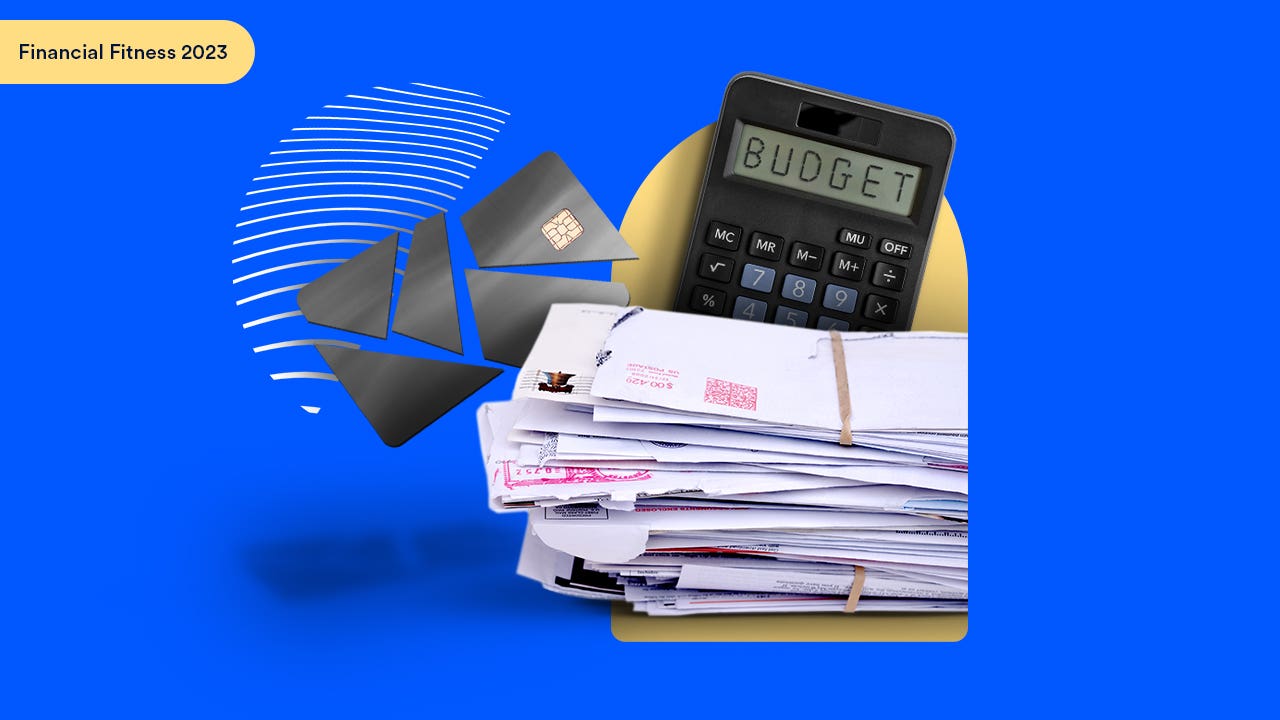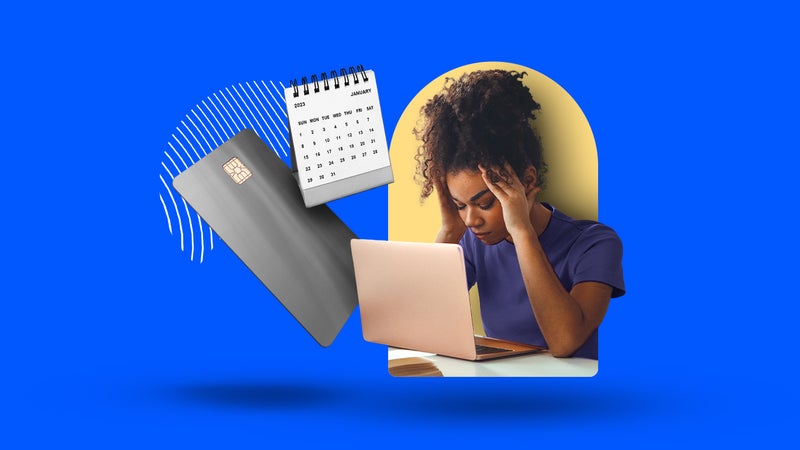How to use credit card statements and tools to create a budget

The Bankrate promise
At Bankrate we strive to help you make smarter financial decisions. While we adhere to strict , this post may contain references to products from our partners. Here's an explanation for . The content on this page is accurate as of the posting date; however, some of the offers mentioned may have expired. Terms apply to the offers listed on this page. Any opinions, analyses, reviews or recommendations expressed in this article are those of the author’s alone, and have not been reviewed, approved or otherwise endorsed by any card issuer.
There’s never a bad time to get serious about your budget, but the beginning of a new year is a great time to assess your spending habits and make goals for the coming year. Check back each week for new Financial Fitness insights and tips to help set you up for success in 2023!
Whether you’re planning for a long-term financial goal such as homeownership or protecting your assets from the uncertainty of a potential recession, your household can benefit from a close analysis of your spending habits — and a discussion of whether you should maintain those habits.
During this process, your credit card statement can provide insight into where your money is going and help you decide whether you need to make any adjustments. Here’s what you need to know about using your credit card statement as a budgeting tool.
How to use your credit card statement to budget
Your credit card statement contains more useful information than you may realize. Although many people receive monthly credit card statements in the mail, you can also access your statement at any time by visiting your online credit card account. Here are five ways to use your credit card statement to inform your monthly budget.
Review each purchase
Once you have your statement in front of you, take a minute to review each of the transactions listed. By reminding yourself of the purchases you put on your credit card during the previous billing cycle, you’ll be better prepared to evaluate whether you want to continue making those kinds of purchases in the future.
Pay attention to how each individual transaction makes you feel — are you glad you made that purchase, or do you think you overspent or bought something unnecessary? Is there anything on the list you wish you hadn’t bought?
You should also review your list of payments and credits. Not only will you find how much money you put towards paying off your credit card debt, but you’ll also see whether you frequently return products you purchase — which might suggest that you are buying more than you need — and whether you were able to redeem any credit card rewards for statement credits. When every penny counts, using your credit card rewards wisely can make a big difference.
Assess interest and fee charges
Review any fees and interest charges you may have accrued over the previous month. If you were charged fees or interest, is there a way to reduce those charges in the future? Should you consider a no-annual-fee credit card or transfer your outstanding balance to a balance transfer card with a zero percent intro APR period?
Once you understand what your credit card statement is telling you, you can use that information to make positive changes in how you shop, spend, save and pay off debt.
And if you’re having trouble making credit card payments due to job loss, medical bills or unexpected financial hardship, reach out to your credit card issuer to ask about assistance programs that might allow you temporary relief or forbearance.
Take stock of recurring charges
Does your credit card statement include a lot of recurring charges? These are the kinds of charges that hit your credit card every month, often automatically — streaming media subscriptions, beauty boxes, meal kits, gym memberships and so on.
Evaluate each of these charges, ask yourself whether the monthly enjoyment is worth the monthly charge and decide which subscriptions you’re ready to cancel.
You may also be able to adjust subscription costs by sharing with others. According to a Bankrate survey, 56 percent of adults have shared subscription service accounts, whether they’re passing around Netflix passwords or singing along to Spotify together.
Know your most frequent purchases
After you review your recurring charges, it’s time to tackle your frequent purchases. These are often food-related: grocery stores, coffee shops, restaurants and takeout tend to make up much of our day-to-day spending. However, you might notice that you also frequently buy clothes, books, toys for your children or entertainment for yourself — and those purchases quickly add up.
The great thing about the frequent purchase category is that you can cut back on your spending without having to completely remove those kinds of purchases from your life. For example, you can save money by ordering pizza less often, but you don’t have to give up your favorite pizza place forever.
It’s your job to create a budget that lets you balance what you want to buy with what you can afford — which may be easier than you realize.
Categorize wants and needs
The key to a successful budget is balancing your wants and your needs. The 50-30-20 budget, for example, is a popular template that suggests putting 50 percent of your money towards needs, 30 percent towards wants and 20 percent towards savings.
Not everyone can divide money according to the 50-30-20 method. Some people may put 80 percent of their income towards rent, bills and other needs, and those with irregular income may have unique ways of managing their cash flow. That said, finding a balance that helps you cover the necessities of life and still gives you a little money to spend as you choose will help you stick to your budget over time.
Make sure your rewards align with your spending
Once you have your budget in place, look for credit cards that reward your ideal spending habits. If you aren’t planning to travel much this year, for example, you might want to switch your everyday spending from a travel rewards card to a cash back card. If you’re hoping to order less takeout and do more meal planning, you might want to stop using a credit card that rewards dining out and start using one that rewards grocery shopping.
Some credit cards offer spending breakdowns within their mobile apps to help you understand the categories you spend the most within. If you look back and see a consistent mismatch between your top spending categories and rewards categories, consider getting a new credit card that will address the unrewarded purchases. Having the right cards in your wallet can save you more money in the long run — and once you earn those rewards, make sure you remember to redeem them.
Use your mobile banking app as a budgeting tool
There are many popular budgeting apps out there, including Mint, YNAB, and PocketGuard — but many people don’t realize that they can also use their mobile banking app as a helpful budgeting tool.
Many of these free apps offer useful financial metrics, such as the ability to track your spending by category or compare this month’s spending to last month’s. Some mobile banking apps, including the Capital One app and the Chase app, also offer tools to help you build your credit score.
Want to use your mobile banking app to plan your financial year? Start by looking up your year-end summary, which can help you understand where your money went over the previous twelve months. Then, ask yourself what you’d like to do differently in the next twelve months.
If you want to save more money, consider setting up a split direct deposit that automatically transfers a portion of every paycheck into a savings account — or use a money-saving app that monitors your spending habits and periodically transfers small amounts of money into savings. If you want to ensure that your credit card bills are always paid on time, consider setting up credit card autopay. You can also set up mobile banking alerts to track your balance and alert you when you’re approaching a certain threshold.
Take some time to explore your mobile banking apps. You might be surprised at how much they have to offer.
The bottom line
Many people must think a little more carefully about budgets right now, and your credit card statement can provide key insights into where your money is going and whether it’s time to adjust your spending habits.
Once you know a little more about what you’re putting on your credit card every month and how much it’s costing you — both in actual price and additional costs such as interest charges — you’ll be ready to make some valuable changes. Use Bankrate’s budget calculator to get started.


